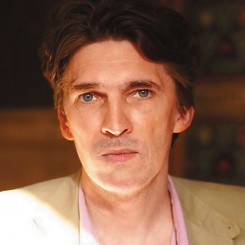Nicolas Bourriaud was recently announced as the chief curator of the 2014 Taipei Biennale to be held at the Taipei Fine Art Museum. The biennale is due to open in September next year.
Bourriaud, currently the director of the École Nationale Supérieure des Beaux-Arts, an art school in Paris, is probably best known for coining the term “relational aesthetics” for an exhibition (“Traffic”) and he then produced his eponymous work Relational Aesthetics (published in 1998). He also co-founded and co-directed Palais de Tokyo with Jérôme Sans (who, incidentally, also curated the 2000 iteration of the Taipei Biennale), the 2005 Lyon Biennale “Experiencing Duration” (also with Sans), and the 4th Tate Triennial entitled “Altermodern” in 2009.
With “relational aesthetics”, Bourriaud identified “a set of artistic practices which take as their theoretical and practical point of departure the whole of human relations and their social context, rather than an independent and private space” (“Relational Aesthetics,” 113). This bundles together artists, beginning in the “long 90s”, who subvert or exceed the traditional space of the art gallery or the ordinary object-hood of artworks in order to engage lived-in reality — examples ranging from the Thai curries of Rikrit Tiravanija, to Vanessa Beecroft’s mannequins, to Carsten Höller’s theme-park-style slides / hotel rooms / reindeer-magic-mushroom live diorama (at the Tate Modern, Guggenheim NY, and Hamburger Bahnhof, respectively). Such art is now often used to provide entertainment at art fair biennales while visitors decide which painting or Jeff Koons bunny to buy. Another prominent name is Tino Sehgal, with major shows at the Guggenheim and Tate Modern in recent years, who sets up situations where conversations take place between the enactors and the audience — which is itself the art work. It is wonderfully democratic because now you can just talk about anything and instantly turn it into art simply by adding at the end – “This is ‘Conversation’ by Tino Sehgal.”
Considering its profile, “relational aesthetics” has arguably reached its apogee. While the “long 90s” has not exactly been subverted yet (pace New Aesthetics or Post-Internet Art), there has already been a backlash to art’s “social turn” (cf. Claire Bishop’s Artificial Hells) with the urgent need to reconfigure the limit of art’s integration into society and the questioning of the nature of such social relations in the age of digital and social media.
Bourriaud stated briefly that he would explore Zhuangzi’s cosmology by way of relational aesthetics. There will surely be much curiosity surrounding his coming visit to Taiwan in December this year.

